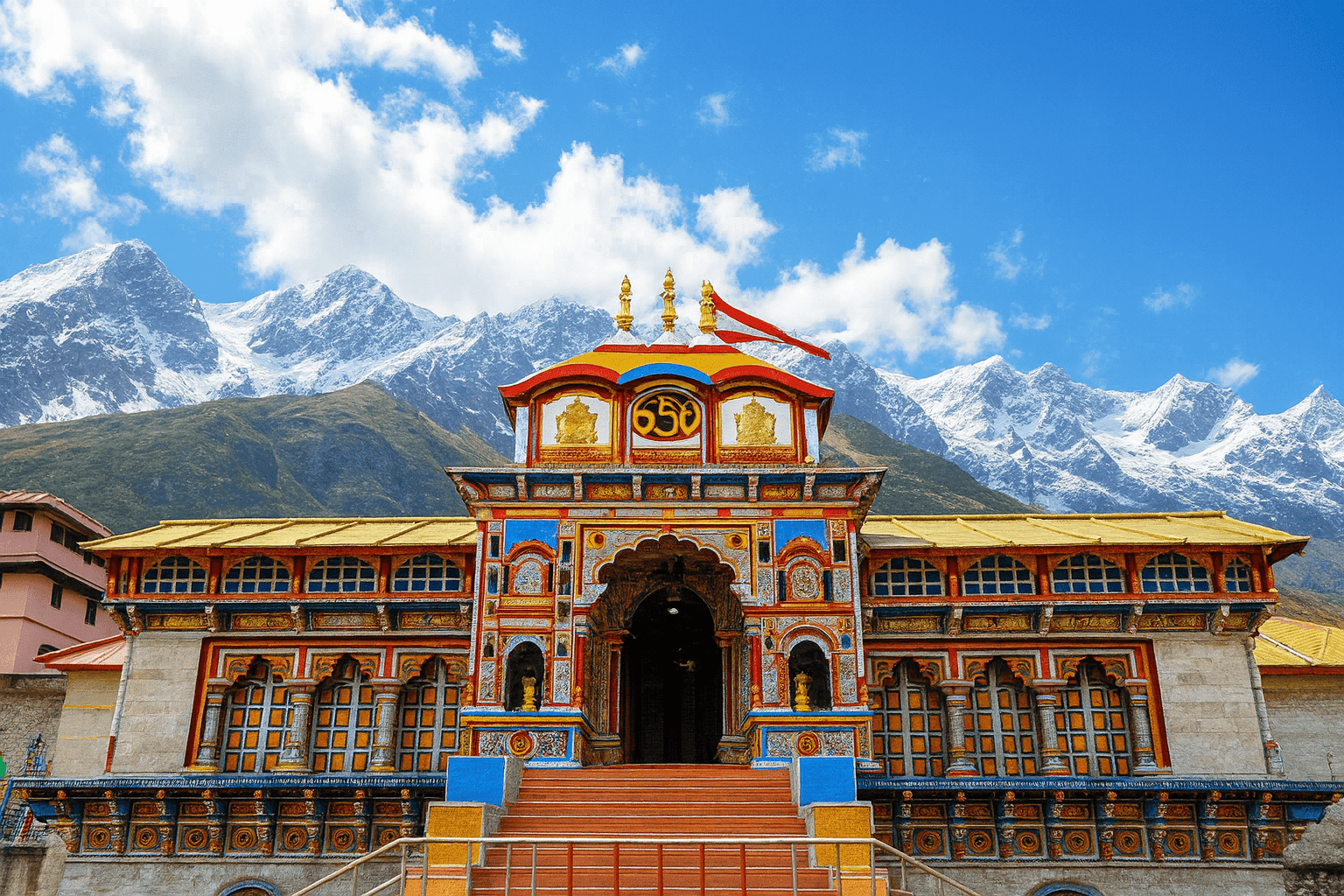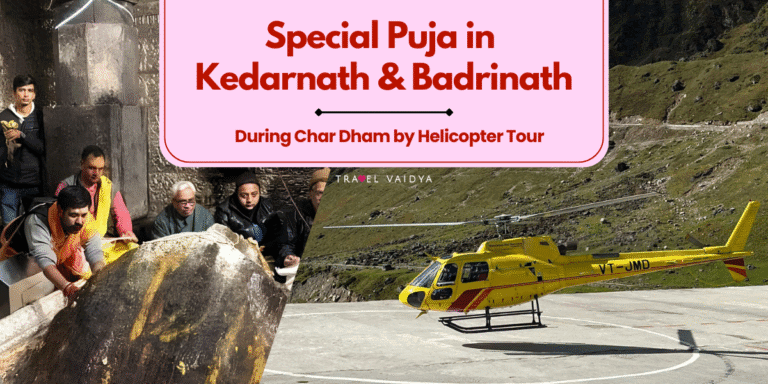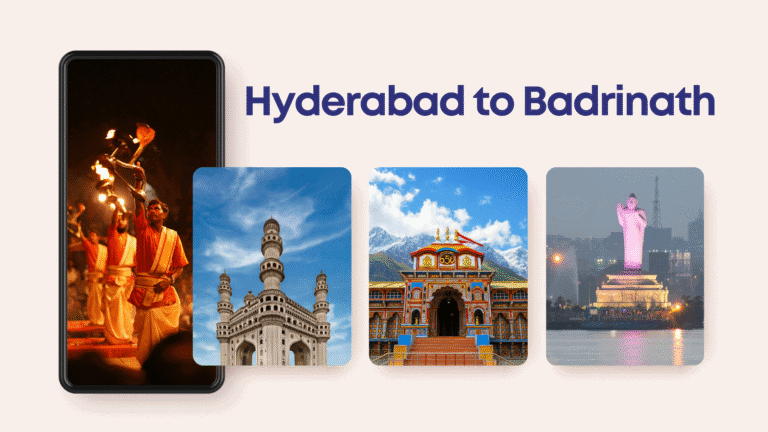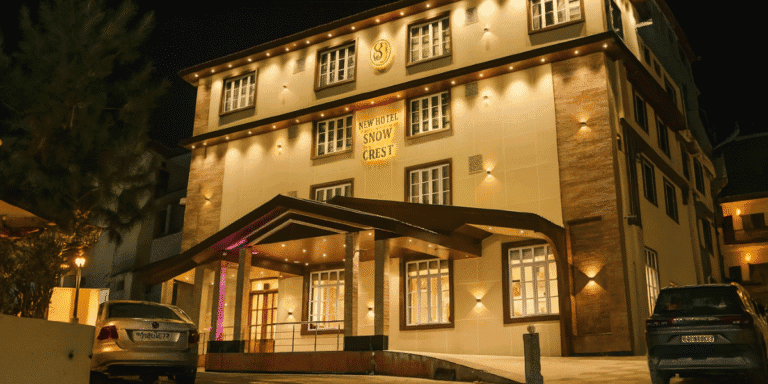You’ve heard about Shree Badrinath Temple, a part of Char Dham Yatra, packed during yatra season, and a must-visit for anyone doing the Himalayan circuit. But honestly, most people only see the surface. Behind the crowds and rituals, there are some really surprising things about this temple that don’t get talked about. Like where the idol actually came from, why the priest isn’t local, or what happens when the temple shuts down for winter. If you’re planning a trip—or even if you’ve been before—these five facts will help you understand the place in a much deeper way. No big words, just real stories and traditions that most yatris don’t even realize while standing in the queue. Let’s dive in—you’ll look at Badrinath a little differently after this.
Table of Contents
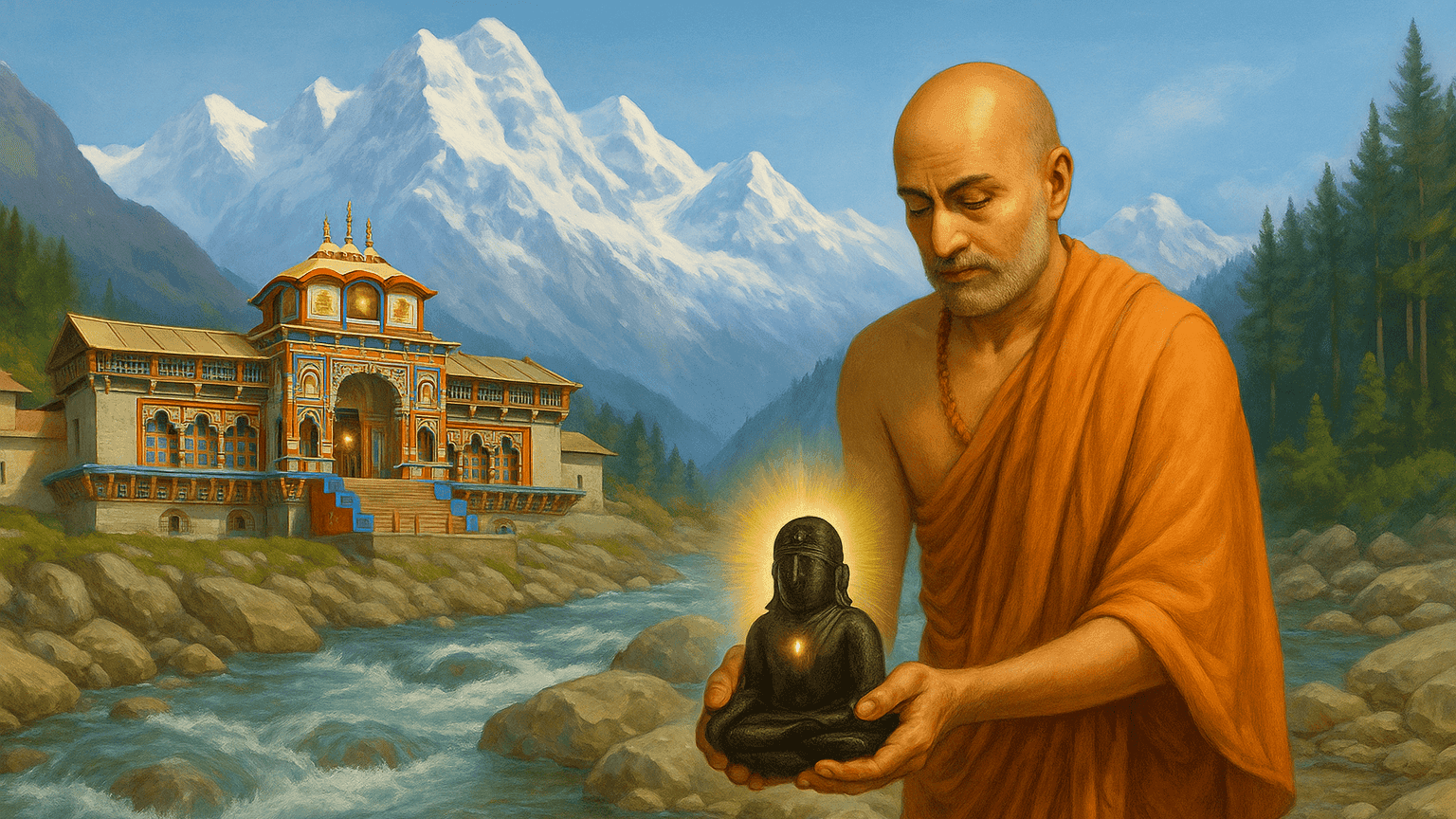
1. The Idol of Badrinarayan Was Found in Alaknanda River
Most people don’t know this: the idol of Lord Badrinarayan wasn’t carved or built. It was found. During his spiritual journey in the 8th century, Adi Shankaracharya pulled the black stone idol straight from the Alaknanda River, not far from today’s temple. He first kept it near Tapt Kund and later moved it to the temple sanctum where it’s still worshipped daily.
- The idol is made from Shaligram, a naturally sacred stone tied to Lord Vishnu.
- It’s believed to be Swayambhu, meaning it appeared on its own, not man-made.
- This same idol, unchanged for over 1,200 years, is still the main murti worshipped today.
2. Shree Badrinath Temple Is a Part of Three Major Pilgrimage Circuits
Badrinath isn’t just part of the Char Dham—it’s the only temple in India that’s part of three major pilgrimage circuits. It connects with the Char Dham Yatra (Dwarka, Puri, Rameshwaram, Badrinath), the Chota Char Dham (Yamunotri, Gangotri, Kedarnath, Badrinath), and the Sapta Badri circuit dedicated to Vishnu in Uttarakhand. No other temple in the country plays this kind of spiritual role. It literally connects all four corners of India—from the beaches of Rameshwaram to the snowy Himalayas.
- Char Dham Yatra (Badrinath, Dwarka, Puri, Rameshwaram)
- Chota Char Dham (Yamunotri, Gangotri, Kedarnath, Badrinath)
- Panch Badri (Badrinath, Yogdhyan Badri, Bhavishya Badri, Vridha Badri, Adi Badri)
This makes Shree Badrinath Temple the only temple in India that is part of all three circuits.
- It shows Lord Vishnu’s pan-India spiritual presence.
- The temple connects South, East, West, and North India through the Char Dham.
- It’s a must-visit for those undertaking multiple yatras.
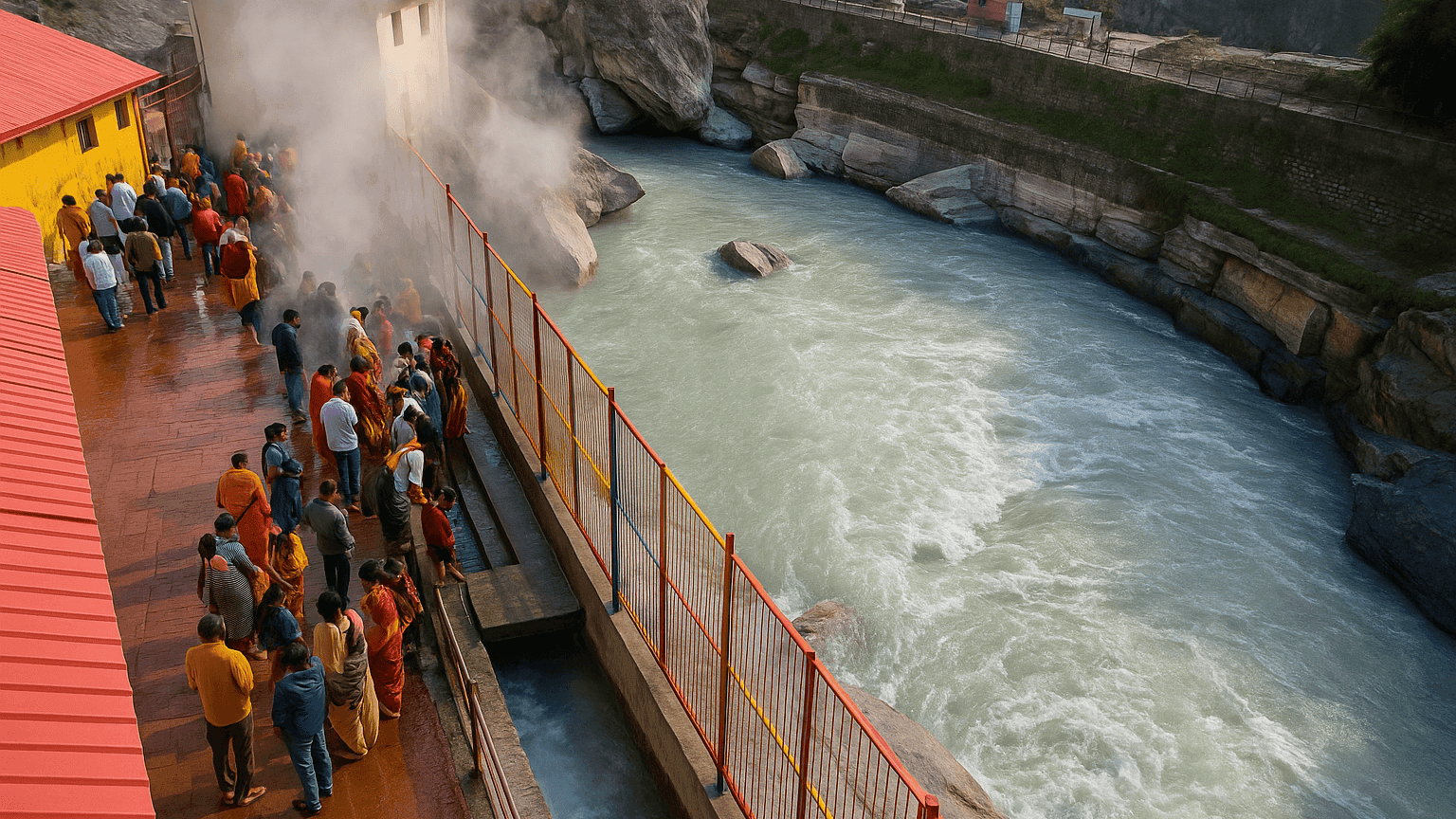
3. The Temple Has a Natural Hot Spring Called Tapt Kund
Right below shree Badrinath Temple steps, you’ll find Tapt Kund — a natural hot water spring that flows non-stop, even in the middle of winter. The water stays around 45°C, while the air around can be freezing cold. Before darshan, every devotee takes a dip here, not just for tradition, but to feel physically refreshed and spiritually ready.
Locals believe the spring carries divine energy from Lord Vishnu, while scientists say it’s due to underground geothermal activity. Either way, the spring never freezes, no matter how much snow piles up around it.
- Rich in sulphur, considered to have healing properties
- Seen as sacred and cleansing before entering the temple
- The water remains around 45°C, even in freezing winter.
- Bathing here is a ritual tradition before entering the temple.
Useful Read: Mana Village – First Indian Village Near Badrinath Temple
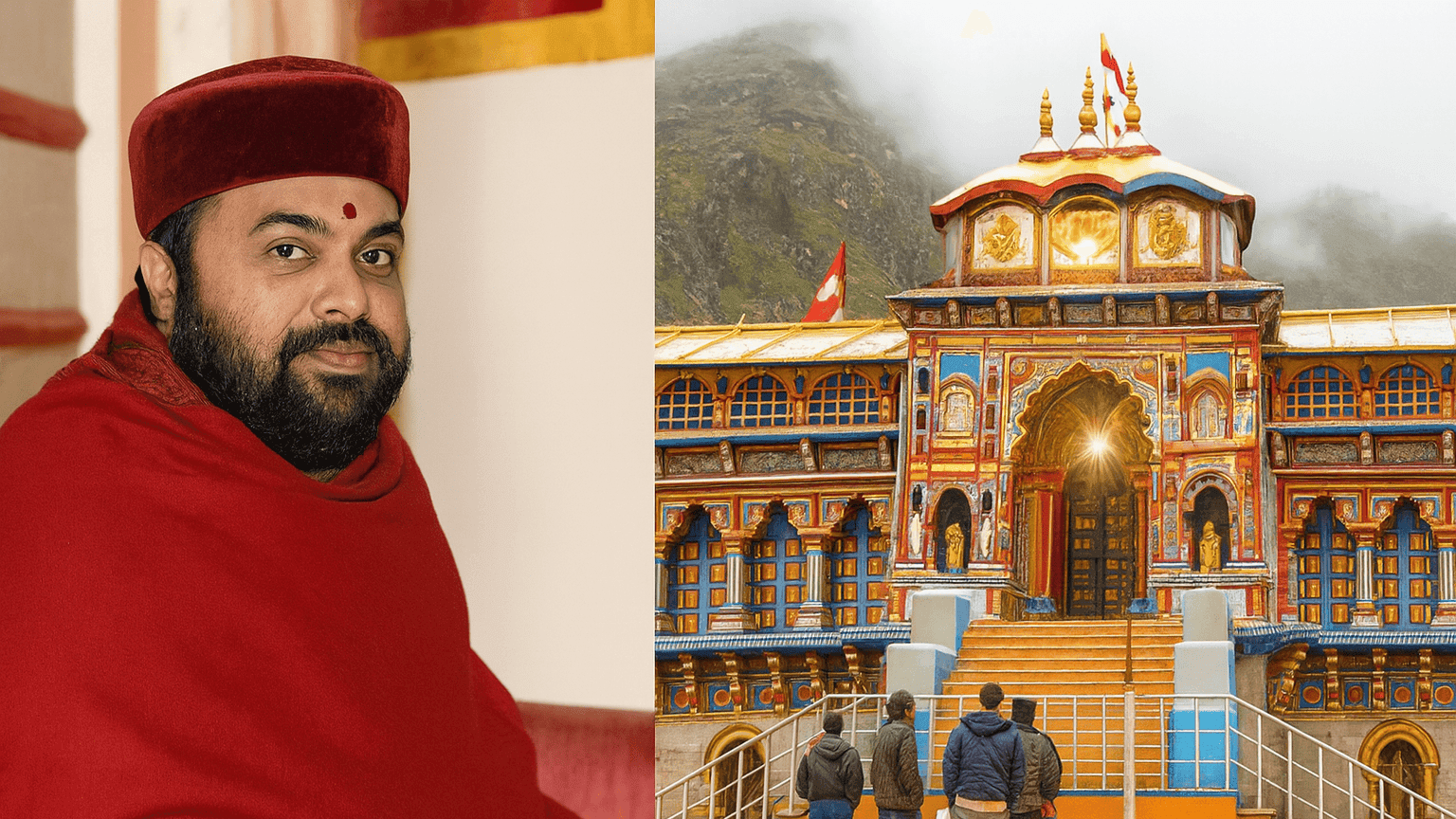
4. The Temple Priest (Rawal) Is Always From Kerala
Here’s something most yatris don’t expect, the chief priest of Shree Badrinath Temple called the Rawal, is a Namboodiri Brahmin from Kerala. This isn’t a recent arrangement. Adi Shankaracharya himself started this tradition over 1,200 years ago, and it still holds firm to this day. It’s not just symbolic. The Rawal travels all the way from Kerala each year to serve at one of the most sacred temples in North India. But he doesn’t enter the sanctum like most priests. Instead, he directs the daily rituals from outside, while a team of trained local assistants performs the puja inside under his guidance.
- Only unmarried Namboodiri men can be appointed as Rawal
- The post is nominated and approved by the Uttarakhand government
- Rawal lives in Joshimath during the temple’s open season
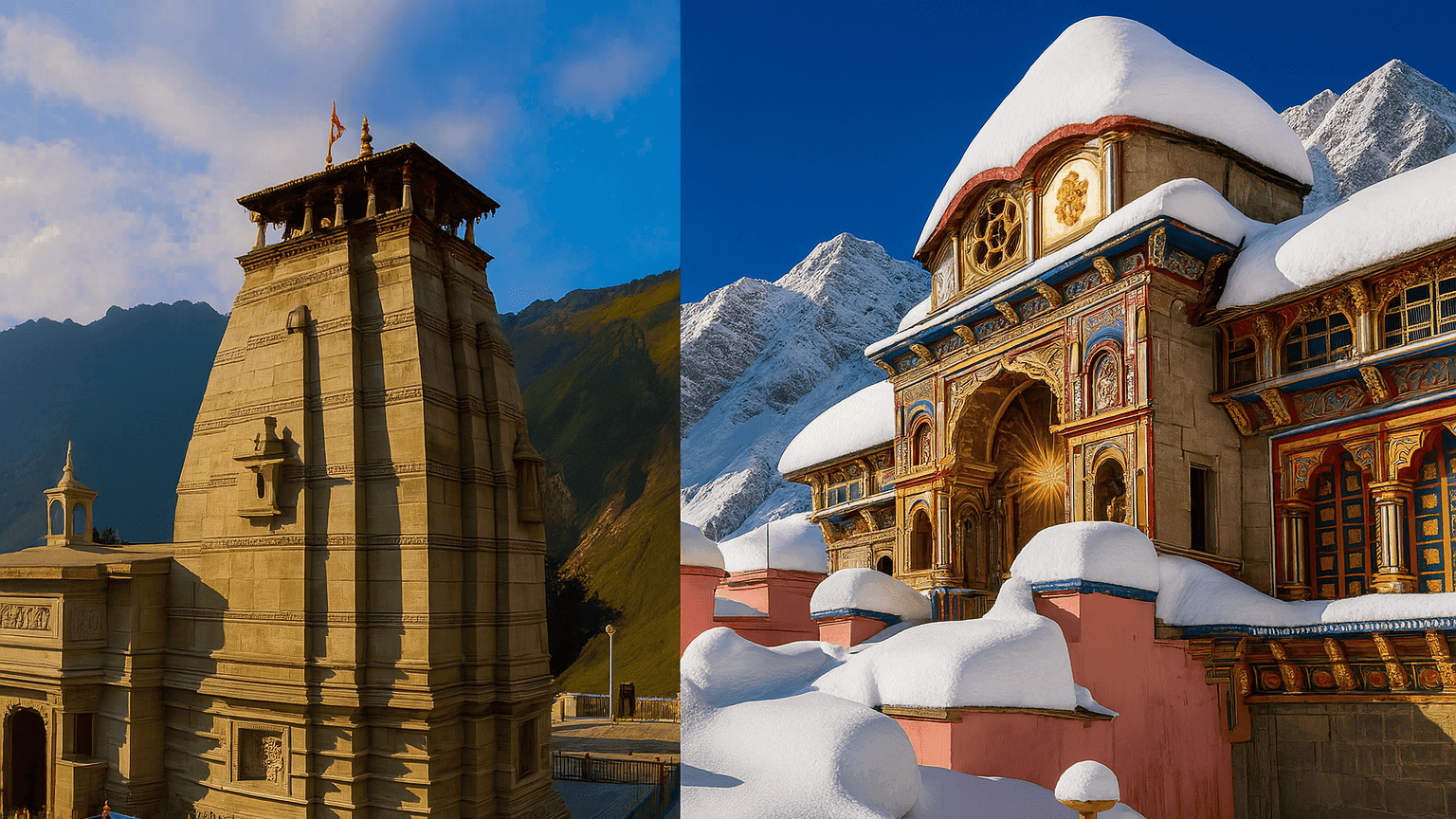
5. Badrinath Temple Remains Closed for 6 Months Every year
Unlike most temples in India, Shree Badrinath Temple remains open for only six months, from late April or early May until October or early November. After that, the entire region gets buried under snow, making it impossible for priests or pilgrims to reach to the temple. As winter approaches, a special closing ceremony called Badri-Kedar Utsav is held. The main idol of Lord Badrinarayan is then ceremonially shifted to the Narsingh Temple in Joshimath, where the worship continues throughout the winter months.
Priests perform the same rituals every day in Joshimath, where the idol is kept for six months. When spring returns and the roads reopen, the idol is brought back up to Badrinath with proper rituals, marking the start of a new pilgrimage season. The deity may move, but the devotion never stops.
- Temple usually opens around Akshaya Tritiya (April–May)
- Closes around Bhai Dooj or later, depending on snowfall
- The final puja before closure is called Badri-Kedar Utsav.
- The deity is placed in the Narsingh Temple, Joshimath during winter.
- Daily puja continues at Joshimath, keeping the tradition alive.
Useful Read: Best Time to Visit Badrinath: 3 Ideal Seasons
Planning to Visit Badrinath Soon? A Quick Note Before You Go
Shree Badrinath Temple sits at 10,300 feet in the Garhwal Himalayas. It’s open for only 6 months a year, and weather plays a big role in how smooth your trip will be. Roads get busy during peak yatra time, and finding good accommodation close to the temple isn’t always easy. If you’re traveling with elders, it’s a good idea to sort out your stay, food options, and temple timings in advance. Keep a buffer day for weather delays and avoid last-minute bookings during May–June or September.
About Travel Vaidya – Trusted Travel Experts of Uttarakhand
Travel Vaidya is a Dehradun-based travel company with deep roots across Uttarakhand. For over 9 years, we’ve helped families, senior citizens, and spiritual travelers explore places like Char Dham, Auli, Jim Corbett, Nainital, Kausani, Almora, and Ranikhet with confidence.
We’re not a call center or big-brand OTA—we’re a small team that builds practical, experience-based itineraries. Every plan is shaped by local knowledge, seasonal awareness, and what actually works on-ground.
From temple visits to hotel check-ins, we handle logistics, route planning, and day-wise support—especially for elders and family travelers. We share what we know from living here, not from reading about it.
This guide is part of our effort to make travel in Uttarakhand easier to understand and plan.


